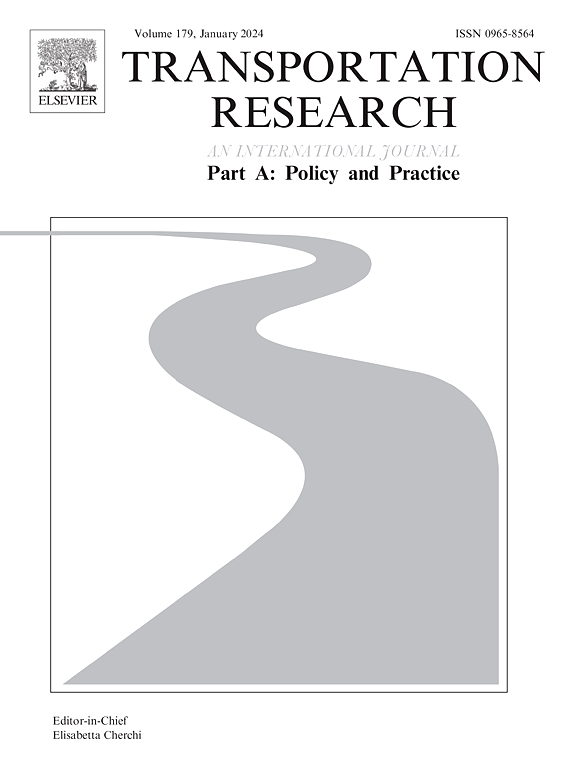Leveraging social media for new energy vehicle policy diffusion in China: A central-local government interaction analysis
IF 6.3
1区 工程技术
Q1 ECONOMICS
Transportation Research Part A-Policy and Practice
Pub Date : 2025-03-30
DOI:10.1016/j.tra.2025.104459
引用次数: 0
Abstract
Social media is increasingly associated with new energy vehicle (NEV) policy diffusion in China. One way to explore how social media and policy diffusion are linked is to review the government posts on different topics of the policy over time. To investigate the diffusion dynamics of NEV policies, this study proposes a central-local government interaction analysis, leveraging the government posts on social media. Dynamic topic model is deployed to unveil the evolving nature and intergovernmental disparities of policy topics. Subsequently, a net directional connectedness model is employed to construct information overflow networks of different policy topics among governments. A comprehensive examination of 5386 text posts is conducted using the proposed method. It is identified that the central government prioritizes guidance policies, emphasizing industry support and global cooperation, while local governments concentrate on specific implementation measures, following a trajectory of infrastructure development, research and development, and tax exemptions. In the policy diffusion network, central government serves as the primary driver of promotional signals, followed by Shanghai, Guangdong and Beijing, while Chongqing acts as a key recipient. Simultaneously, successful local implementation can feed back experiential knowledge to central policy, constituting a dual-directional diffusion mechanism of NEV policies between the central and local governments. These findings offer valuable insights into the understanding and diffusion of NEV policy in the digital era, revealing the complex interactions across diverse regions and administrative levels.
求助全文
约1分钟内获得全文
求助全文
来源期刊
CiteScore
13.20
自引率
7.80%
发文量
257
审稿时长
9.8 months
期刊介绍:
Transportation Research: Part A contains papers of general interest in all passenger and freight transportation modes: policy analysis, formulation and evaluation; planning; interaction with the political, socioeconomic and physical environment; design, management and evaluation of transportation systems. Topics are approached from any discipline or perspective: economics, engineering, sociology, psychology, etc. Case studies, survey and expository papers are included, as are articles which contribute to unification of the field, or to an understanding of the comparative aspects of different systems. Papers which assess the scope for technological innovation within a social or political framework are also published. The journal is international, and places equal emphasis on the problems of industrialized and non-industrialized regions.
Part A''s aims and scope are complementary to Transportation Research Part B: Methodological, Part C: Emerging Technologies and Part D: Transport and Environment. Part E: Logistics and Transportation Review. Part F: Traffic Psychology and Behaviour. The complete set forms the most cohesive and comprehensive reference of current research in transportation science.

 求助内容:
求助内容: 应助结果提醒方式:
应助结果提醒方式:


